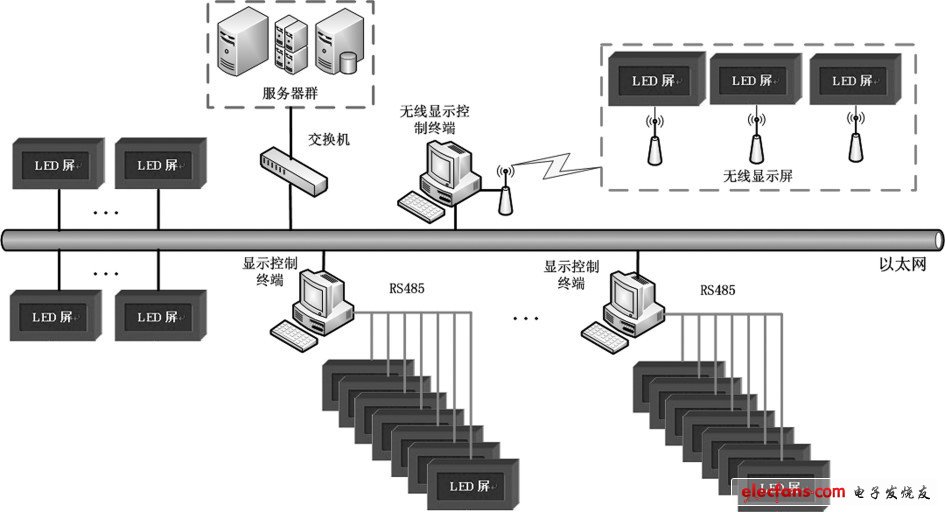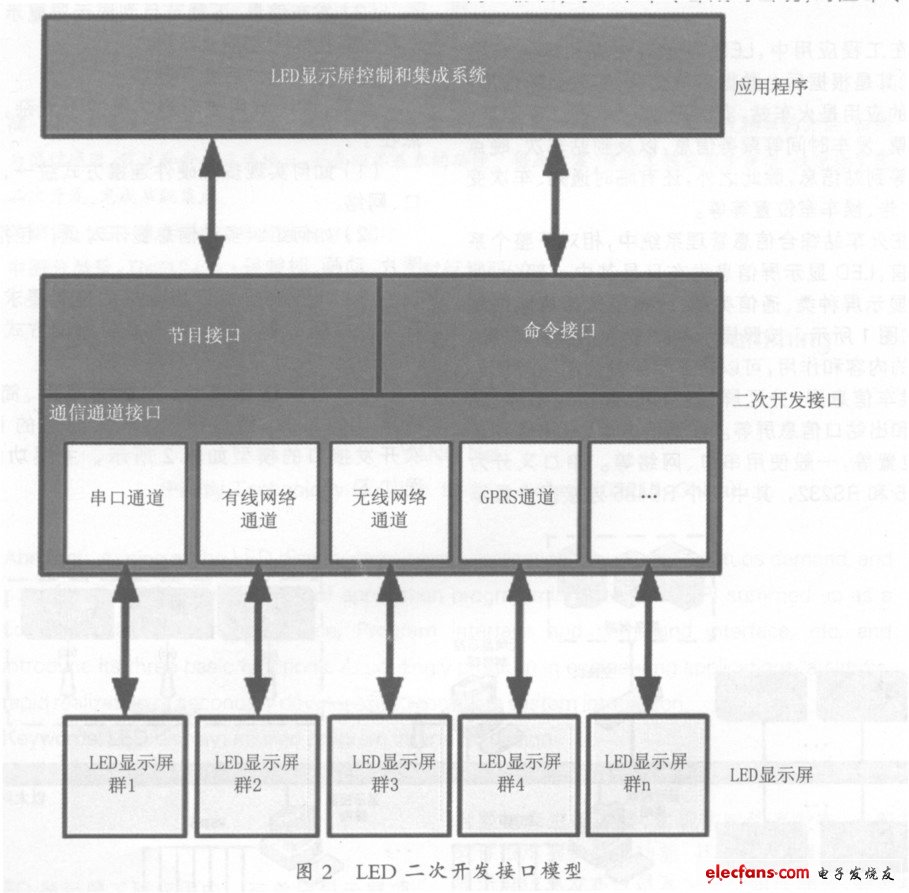Abstract: Aiming at the demand of secondary development interface in LED display engineering application, a method of secondary development interface is proposed, which is summarized into three types of interfaces: communication channel, program and command, and introduces its basic functions. According to this scheme, secondary development can be realized simply and quickly in engineering applications, and system integration can be completed.
introduction
In the LED display engineering application, there is a single display project, but more are multiple display projects. For a single display, the direct use of the manufacturer's configuration of the control software will meet the requirements; but for multiple displays, especially system integration projects, the manufacturer's configuration of the control software will be difficult to meet the requirements. This is because, first of all, the control software configured by the manufacturer generally only implements common functions, and it is difficult to meet the requirements for personalized functions. For example, the integration project needs to be connected with the back-end database to realize real-time information release, and it is difficult for general control software to provide this. Item function; Secondly, for the integration project, the display information release is only one of the components, which requires a unified control and interface style; again, in a large integration project, there may be multiple vendors winning the bid, or engineering implementation. Replace or add products from other manufacturers after many years, and the implementation technologies of different manufacturers may differ.
Therefore, in order to meet the application of LED display in engineering, manufacturers generally need to provide secondary development interface for system integrators to carry out secondary development and complete system integration. After market research, the secondary development interface of LED display is not uniform, there is no unified standard, some are too simple, it is difficult to meet engineering applications, and some are too complicated, resulting in long system integration cycle and high cost. Therefore, after research, this paper proposes a new LED secondary development interface design method, allowing users to achieve system integration simply and quickly, while reducing the time and cost of secondary development.
1 Main functional requirements analysis and model building
In engineering applications, LED displays are primarily used to post information, especially in real-time, based on changes in the back-end database.
Typical applications are train stations, real-time updates of trains, soft/hard seat tickets, berth tickets, departure time and other ticketing information, as well as arrival and departure times, late trains and other arrival information, in addition to temporary notices, train changes, advertising , waiting room location, etc.
In the integrated information management system of the railway station, the LED display information is only a part of the whole system, but the LED display type, communication type and distribution position may be complicated, as shown in Figure 1. According to the size of the display, the location of the display, the content and function of the display, the display can be divided into a total guide information screen, a waiting information screen, a partition screen, a ticket checking screen, a channel display screen, a station screen and an exit port information screen. Wait. In terms of communication, serial ports, networks, etc. are generally used depending on hardware conditions, location, and the like. The serial port is further divided into RS485 and RS232. One RS485 is connected to multiple displays, one RS232 is connected to one display; the network is divided into wired network, wireless network and GPRS.

Figure 1 LED display typical system integration diagram
After comprehensive analysis, the functions of the system involving the display screen are:
(1) release information, update information, advertisements and guiding information; (2) control display screen, such as restart, time switch screen, setting parameters, etc.; (3) monitor display screen, display connection status, update time, and so on.
Its working process is:
(1) connect the display; (2) release information, download the program to the display; (3) control and monitor the display; (4) disconnect after the end of the operation.
In fact, the system call display function is not complicated, the main difficulty is:
(1) How to achieve a variety of hardware connection methods, including serial port, network; (2) how to organize a variety of information display objects, including text, pictures, animation, clock, etc.; (3) according to the control requirements of the LED display, Provide basic control commands to adapt to a variety of system integration methods, including C / S, B / S and distributed, hierarchical control.
In order to solve these difficulties and achieve the purpose of universal, simple and easy to integrate, after research, the model of the LED secondary development interface constructed in this paper is shown in Figure 2. The main functions and processes are as follows:
(1) Call the communication control interface, create its communication channel according to different communication methods, complete the LED display connection; (2) call the program production interface, create the program, add the program object, generate the program data, and then send the program using the command interface. To the display screen, complete the information release; (3) call the command interface, perform display restart, open/close screen, set brightness, update time, read display time, etc., complete the control and monitoring of the display; When exiting the system, close the communication channel, release the resources, and end the call operation of the secondary development interface.

Wire harness and the surrounding parts shall be even and sufficient distance shall be kept from the heat source,
Considering the protection against electromagnetic interferencee,
Consider assembly technology, maintenance technology,
Grounding wire layout,
Heat dissipation of wire harness and fuse box
Car Seat Harness,Power Seat Wiring Harness,Power Seat Harness,Right Seat Wire Harness
Dongguan YAC Electric Co,. LTD. , https://www.yacenter-cn.com